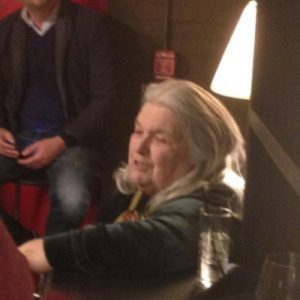Norma Jenckes

My encounter with sepsis and septic shock started the last day of May 2019. I was at home and I was frightened. I felt exhausted and was finding it difficult to walk because of the dizziness and light-headed feelings. I use a walker due to chronic pain caused by rupture discs and sciatica. But this was different. I had severe pain that had moved from my left lower back to my left abdomen.
I wondered about kidney stones. I took my temperature and it was 100 degrees. This added to my fears because in the past when I have had a UTI, I would not spark a temperature. I knew that for me a high temp meant something very bad was happening.
A friend of mine came by because she was convinced that my symptoms were dangerous. When she arrived she called 911 and when the local firemen arrived in Pawtucket she asked them to evaluate me. They did and said that I was very sick and should be taken to an emergency room nearby. Since I had all my doctors and medical care shifted to Boston and the Brigham and Womens hospital but they could not bring me there. My friend persisted and asked if there were any private ambulance services that would take me the fifty miles. After trying a couple of their suggestions she found one that was willing to go to Boston.
I hardly recall the ride but I do remember how the man in the back with me kept monitoring my vital signs. We were rushed into the emergency room and soon I was on a gurney and on my way to the operating room. My temp was 103–“you just went to the head of the line,” the orderly said as he wheeled me in.
Grace can overcome all limitations. I felt my limitations so severely when I was in septic shock. I could not think straight. I was so grateful when my old college friend Terry appeared in my room. She was attending the celebration of 100 years of Emmanuel College. She was so funny and so sane. Then my son Joe appeared and brought my husband Yash up from Pawtucket daily. Later Mary Ellen came from New York and her sister Clare–such rocks of friendship and stability.
“To put it another way, what I let God see and accept in me also becomes what I can see and accept in myself. And, even more, it becomes that whereby I see everything else. This is “radical grace.” This is why it is crucial to allow God and at least one other person to see us in our imperfection and even in our nakedness, as we are—rather than as we ideally wish to be. It is also why we must give others this same experience of being looked upon tenderly in their imperfection; otherwise people on either side will never know divine love. I pray there is at least one person before whom you can be imperfect. I have several in my life, and they are such a relief and joy to be around.
Such utterly free and gratuitous love is the only love that validates, transforms, and changes us at the deepest levels of consciousness. It is what we all desire and what we were created for. Once you allow it for yourself, you will almost naturally become a conduit of the same for others.
Can you let God “look upon you in your lowliness,” as Mary put it (Luke 1:48), without waiting for some future moment when you believe you are worthy? Consider these words inspired by John of the Cross: “Love what God sees in you.” [1]
What does God see in me? I guess his own IMAGE the bit of divinity that he created and gave to us–my immortal soul. I tried hard to dwell on that while I was in the ICU and in Septic Shock but it did elude me. Only the visits of the Chaplain and the Reikei volunteers conveyed a sense of peace and also a sense that there was a place beyond this. One of the Reikei people said– you kept on talking about the bright light. But you were sent back. Now you must discover– What were you sent back to do?
What was I sent back to do?
I am not the first and I will not be the last. So I should tell what happened to me and unite with others.
This understanding of what I could do now came clearer to me yesterday. Stephanie a personal home help aide came to help me bathe and in conversation I told her about my septic shock experience and she told me that her mother-in-law had died of septic shock last October. Her description of that woman’s two year downhill spiral was such a mirror of my own. The only difference was that she was re-admitted to a hospital and she became sepsis again.
This made me also more aware of how each of us is so alone with our experience. Some hospitals have support groups for septic shock survivors but I do not know of any and I certainly have not been invited to participate in one.
This is wrong—it is part I fear of a cover-up mentality that afflicts American life.
Instead of facing our flaws we deny them and nothing improves.






























